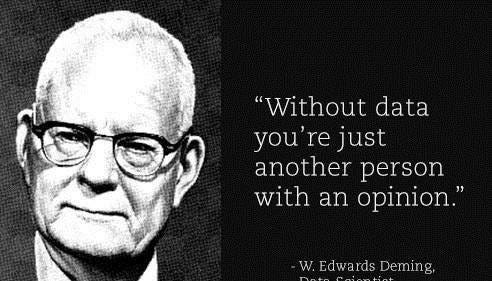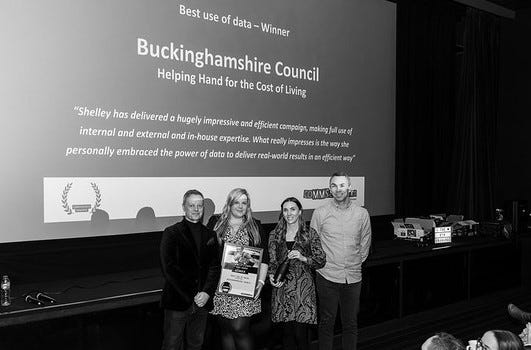Netflix seasonal spreadsheet smash shows potential for data communications
Plus... How I'm using LinkedIn data for efficient social strategy in 2024, data deems best place for Chris Rea to pee, and UnAwards gongs for stats savvy public sector comms teams.
World goes wild for Netflix’s mega-spreadsheet
As the nation tucked into mince pies and recovered from Christmas parties, Netflix delivered an early gift for data enthusiasts in the form of ‘What We Watched: A Netflix Engagement Report’ - a comprehensive report of what people watched on Netflix from January to June 2023.
The report - basically a spreadsheet - covers more than 18,000 titles, representing 99% of all viewing on Netflix — and nearly 100 billion hours viewed. Information provided is the title, whether releases globally, release date and total viewing hours. In the future, Netflix will release this data every 6 months.
“This is a big step forward for Netflix and our industry. We believe the viewing information in this report — combined with our weekly Top 10 and Most Popular lists — will give creators and our industry deeper insights into our audiences, and what resonates with them,” boasted the streaming platform in an official press release.
What does this mean for comms people?
In a call with journalists, Netflix was very keen to stress that the data released is the same data it uses to run its business, and acknowledged that in the past its reluctance to release data has created some issues of mistrust. A major bone of contention in the Hollywood writers union’s strike was that creators were not privy to streaming numbers, with the suspicion they weren’t being compensated according to the revenues.
So this generous sharing of internal data can be seen as a strategic move to protect its business - without creators on board it has a problem - and its reputation among key stakeholders; namely creators, investors, advertisers and the media.
The clever thing about this release - in a media world that is increasingly using data sources as the basis for stories - is the sheer number of angles that can be derived from the 12,800 lines and 4 columns, and combinations of these.
So for example,
The Times of India was able to put a country slant on the data.
Yahoo Finance focused on Netflix’s investment in Korean language films and their popularity.
Netflix’s PR team didn’t need to do all the heavy lifting on finding angles for different media, albeit there will have been a lot of work upfront to pull the data together and get it signed off. But with the work done, the story clearly achieved a wide reach and will likely have a long tail.
Variety, also said it was an opportunity for Netflix to “brag” about its huge engagement and reach “across more than 247 million (and counting) customers worldwide”.
It certainly gives food for thought on what data your organisation might be sitting on that could be released, to demonstrate success and enhance reputation, as well as to protect it when needed.
To do this well your team will need a mix of data curiosity, comfort and literacy in the comms team, critical thinking, strong relationships internally and externally, and of course creative thinking.
For teams with more advanced data chops, there’s also the exciting prospect of merging datasets to tell new and compelling stories and using tools like Flourish for visualisation.
Need support for your comms team to embrace data in 2024? Have a data-informed communications project in mind but need some expertise to get it moving? Drop me a line on alex@whetstonecomms.com.
Chris Rea is now home from being home for Xmas, but…
which service station would he have stopped at during his festive motorway mission?
So posed the social media account Very British Problems in December. In festive spirit, my data-driven approach (Google Maps data, Which? reviews, desk research) suggested Donnington Moto Services as the best place for a pitstop mid-route to Middlesborough for our Chris.
But those with local knowledge also had some very valid suggestions, showing that you can get the best insights by combining data sources! Read the full LinkedIn post here.
How I’m upping my LinkedIn game with data and AI
With the house finally tidy after a New Year’s Eve house party (candle wax on the fancy table cloth still being dealt with), I gave myself a development day to start off 2024; a mixture of reading, listening and playing with data and tools.
LinkedIn is a key platform for me to reach potential clients and collaborators, and Collaborative Articles are something I’ve identified I need to do more on. The question is, which of the exisitng articles provide the greatest opportunity?
For a bit of fun, I mined 465 articles under Strategic Communications (basically as many as I could find), and wrangled in some metadata to show number of expert answers, reactions and reposts (as a proxy for visibility), plus a link to each article.
I then put this dataset into a custom GPT, which allows me to ask questions of the dataset like ‘I'm an expert on data, which articles should I focus on contributing to?’ and ‘Which articles with popular topics in the title currently have a small number of answers and low levels of engagement?’.
You can try it out here - it’s already getting some rave reviews on LinkedIn.
What does this mean for comms people?
There’s an increasing need for communications professionals to have a solid evidence base for work they do and decisions they take, especially in a time of constrained budgets and smaller teams.
Our social media data deep dive audits were popular with public sector teams in 2023 - to test what really works and what doesn’t - and now’s a great time to be using data to make best use of your resources in 2024.
If you have a management platform like Orlo and Hootsuite in place for social media, and can get data out of the backend for 6 or 12 months across your social channels, you are already in a good place.
Key (again) is having the skills and confidence in your teams to make best use of the data you have, to turn it into actionable insight.
UnAwards data comms gong winners
Talking of data skills and confidence, well done to the Buckinghamshire Council comms team for scooping ‘Best use of data’ - sponsored by Whetstone Communications - at the UnAwards 2023.
I had the pleasure of judging the entries, and presenting the Buckinghamshire team with their award on the day for their very impressive ‘Helping Hand for the Cost of Living’ campaign.
In my judging notes I wrote that the Bucks team “delivered a hugely impressive and efficient campaign, making full use of internal and external and in-house expertise”. The campaign “embraced the power of data to deliver real-world results in an efficient way… delivering a tangible benefit for some of Buckinghamshire’s most vulnerable residents”.
Highly commended was Essex Fire and Rescue Service, which made simple but brilliantly effective use of data to hugely increase volunteer applications.
Also shortlisted were Wigan Council PR Team - Here for You, Greater Manchester Combined Authority - Helping Hands campaign, and Hertfordshire County Council - Keep us Together, fostering siblings campaign.
Big thanks and congratulations to Darren Caveney for organising the Awards and for all sponsors and attendees for making it a memorable day.
Data Communications Chronicles is written by Alex Waddington, founder of Whetstone Communications, which helps charity, public sector and higher education comms teams to use data to be more effective. To get in touch to discuss how we could work together email alex@whetstonecomms.com.







Some brown paper and a warm iron should sort that tablecloth out!